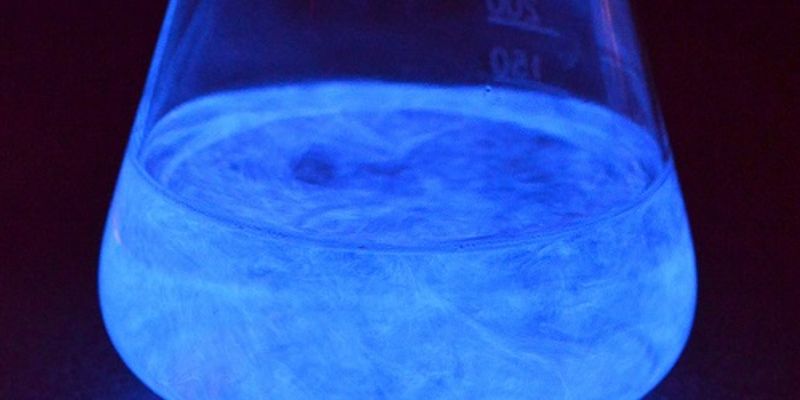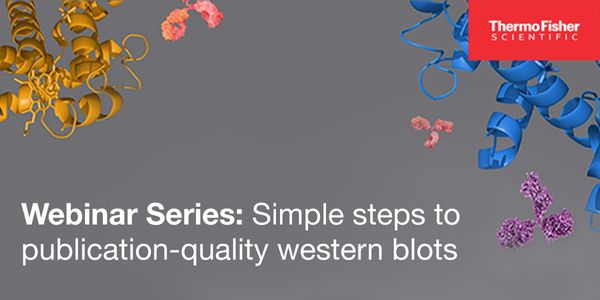Chemiluminescence
Chemiluminescence is the luminescence ( emission of light) resulting from chemical reactions. There is chemiluminescence happening everywhere in nature (e.g., within fireflies and jellyfish) derived from the emission of photons when electrons go from an excited state to their ground state.
-
SEP 28, 2023 | 10:00 AMAccurate diagnosis of H. pylori infection remains both crucial and challenging today. In line with current guidelines, confirming eradication after antibiotic treatment is essential. Diagnos...OCT 14, 2021 | 9:00 AMDate: October 14, 2021 Time: 9:00am (PDT), 12:00pm (EDT), 5:00pm GMT Western blot analysis is a method widely used in the lab today because of its versatility in detecting and measuring spe...Speaker: Kelli Feather-HeniganPresented at: Webinar series: Simple steps to publication-quality western blots
Sponsored By: Thermo Fisher ScientificAUG 29, 2019 | 8:00 AMDate: August 27, 2019Time: 11:00am PDT, 2:00pm EDTBackground: Clinical guidelines for H. pylori screening and post-treatment testing endorse the use of urea breath test (UBT), H. py...Speaker: Dylan Pillai, MD, PhD, FRCPC (C)While chemiluminescence has been the traditional approach to western blot detection, this strategy is being progressively supplemented or replaced with fluorescence-based detection. With the...
FEB 15, 2018 | 10:00 AM
DATE: February 15, 2018TIME: 10:00 AM PST, 1:00 PM ESTModern biomedical instrumentation for research or diagnostic applications often rely on cameras as detectors. Cameras in instrument...
The 7 Steps of Protein virtual event offers both broad and in-depth content, designed to give you the information and insights you need to empower your protein research every step of the way....
Addressing the antibody reproducibility crisis: A panel discussion with key scientific leaders Reproducibility and antibody validation standards are two significant challenges f...
Speaker:
Aled Edwards, PhD
, Matt Baker
, Anita Bandrowski, PhD
, Paul Wallace, PhD
, John Rogers, PhD
, Christoph Hergersberg, PhD
Presented at: Protein and Cell Analysis Education Series
Western blotting is a dependable, trusted method for protein detection used by thousands of labs worldwide. While the process of western blotting often seems straightforward, different variab...
Contemporary serologic testing has revolutionized the field of celiac disease. Highly accurate serologic assays have shown the prevalence of celiac disease to be nearly 1:100 in many populat...
Speaker:
Daniel Leffler, MD, MS and Jack Maggiore, PhD
Sponsored By: Inova Diagnostics,
Inova Diagnostics
SEP 28, 2023 | 10:00 AM
Accurate diagnosis of H. pylori infection remains both crucial and challenging today. In line with current guidelines, confirming eradication after antibiotic treatment is essential. Diagnos...
OCT 14, 2021 | 9:00 AM
Date: October 14, 2021 Time: 9:00am (PDT), 12:00pm (EDT), 5:00pm GMT Western blot analysis is a method widely used in the lab today because of its versatility in detecting and measuring spe...
Speaker:
Kelli Feather-Henigan
Presented at: Webinar series: Simple steps to publication-quality western blots
Sponsored By: Thermo Fisher Scientific
Sponsored By: Thermo Fisher Scientific
AUG 29, 2019 | 8:00 AM
Date: August 27, 2019Time: 11:00am PDT, 2:00pm EDTBackground: Clinical guidelines for H. pylori screening and post-treatment testing endorse the use of urea breath test (UBT), H. py...
Speaker:
Dylan Pillai, MD, PhD, FRCPC (C)
While chemiluminescence has been the traditional approach to western blot detection, this strategy is being progressively supplemented or replaced with fluorescence-based detection. With the...
FEB 15, 2018 | 10:00 AM
DATE: February 15, 2018TIME: 10:00 AM PST, 1:00 PM ESTModern biomedical instrumentation for research or diagnostic applications often rely on cameras as detectors. Cameras in instrument...
The 7 Steps of Protein virtual event offers both broad and in-depth content, designed to give you the information and insights you need to empower your protein research every step of the way....
Addressing the antibody reproducibility crisis: A panel discussion with key scientific leaders Reproducibility and antibody validation standards are two significant challenges f...
Speaker:
Aled Edwards, PhD
, Matt Baker
, Anita Bandrowski, PhD
, Paul Wallace, PhD
, John Rogers, PhD
, Christoph Hergersberg, PhD
Presented at: Protein and Cell Analysis Education Series
Western blotting is a dependable, trusted method for protein detection used by thousands of labs worldwide. While the process of western blotting often seems straightforward, different variab...
Contemporary serologic testing has revolutionized the field of celiac disease. Highly accurate serologic assays have shown the prevalence of celiac disease to be nearly 1:100 in many populat...
Speaker:
Daniel Leffler, MD, MS and Jack Maggiore, PhD
Sponsored By: Inova Diagnostics,
Inova Diagnostics









